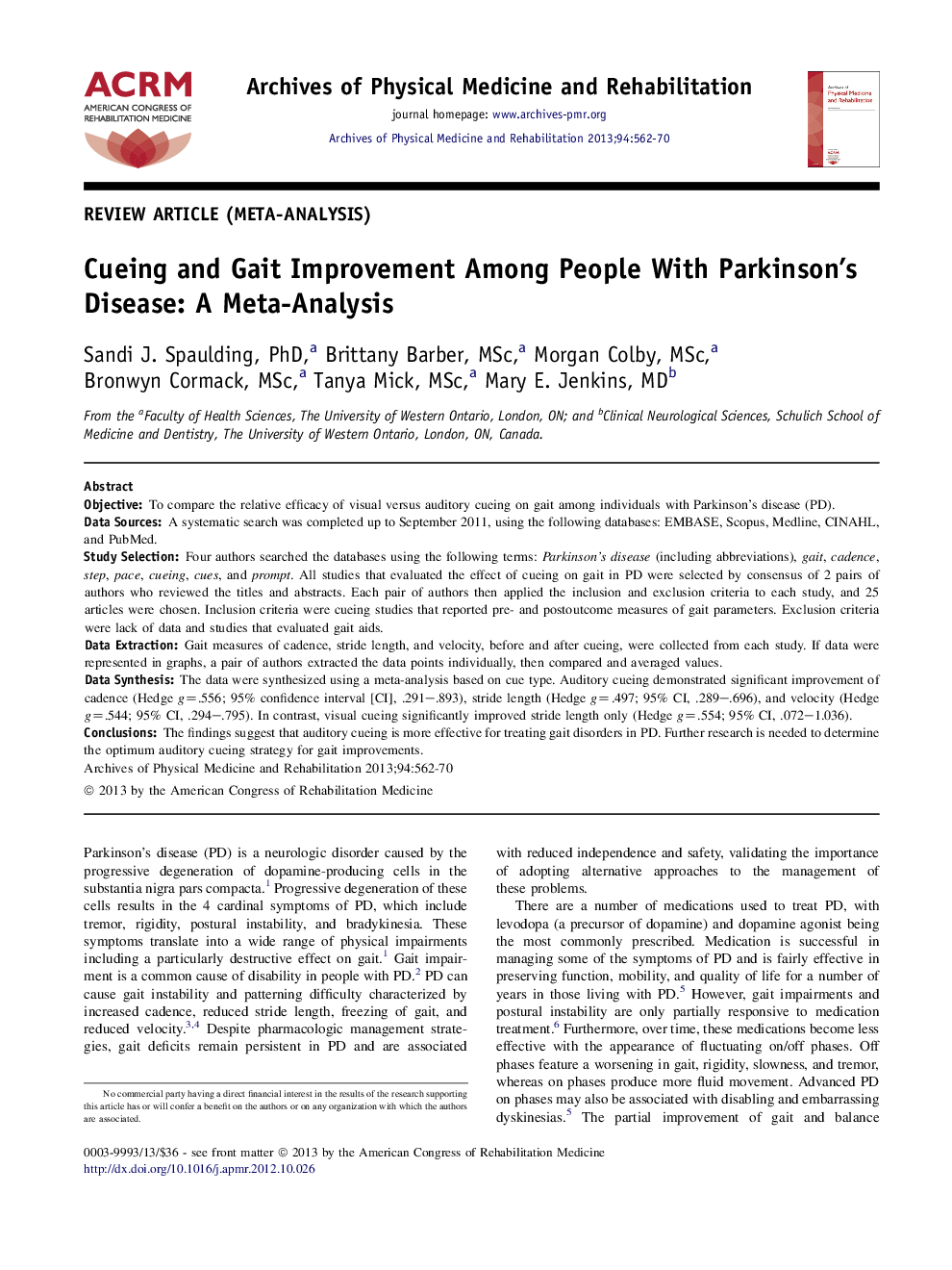| Article ID | Journal | Published Year | Pages | File Type |
|---|---|---|---|---|
| 3449260 | Archives of Physical Medicine and Rehabilitation | 2013 | 9 Pages |
ObjectiveTo compare the relative efficacy of visual versus auditory cueing on gait among individuals with Parkinson's disease (PD).Data SourcesA systematic search was completed up to September 2011, using the following databases: EMBASE, Scopus, Medline, CINAHL, and PubMed.Study SelectionFour authors searched the databases using the following terms: Parkinson's disease (including abbreviations), gait, cadence, step, pace, cueing, cues, and prompt. All studies that evaluated the effect of cueing on gait in PD were selected by consensus of 2 pairs of authors who reviewed the titles and abstracts. Each pair of authors then applied the inclusion and exclusion criteria to each study, and 25 articles were chosen. Inclusion criteria were cueing studies that reported pre- and postoutcome measures of gait parameters. Exclusion criteria were lack of data and studies that evaluated gait aids.Data ExtractionGait measures of cadence, stride length, and velocity, before and after cueing, were collected from each study. If data were represented in graphs, a pair of authors extracted the data points individually, then compared and averaged values.Data SynthesisThe data were synthesized using a meta-analysis based on cue type. Auditory cueing demonstrated significant improvement of cadence (Hedge g=.556; 95% confidence interval [CI], .291–.893), stride length (Hedge g=.497; 95% CI, .289–.696), and velocity (Hedge g=.544; 95% CI, .294–.795). In contrast, visual cueing significantly improved stride length only (Hedge g=.554; 95% CI, .072–1.036).ConclusionsThe findings suggest that auditory cueing is more effective for treating gait disorders in PD. Further research is needed to determine the optimum auditory cueing strategy for gait improvements.
